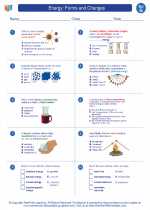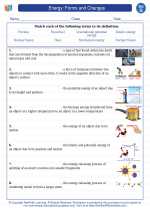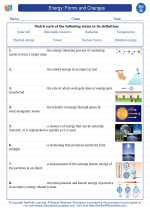Energy: Forms and Changes -> sulfur
Sulfur
Sulfur is a chemical element with the symbol S and atomic number 16. It is a non-metal and belongs to the group 16 (chalcogen group) on the periodic table. Sulfur is an essential element for life and is found in many amino acids, proteins, and vitamins. It is also commonly found in the Earth's crust and is used in various industrial processes.
Physical and Chemical Properties
Here are some key physical and chemical properties of sulfur:
- Physical state: Sulfur exists as a yellow, brittle solid at room temperature.
- Odor: It has a distinct, characteristic odor, often described as rotten egg smell.
- Melting point: Sulfur melts at 115.21°C.
- Boiling point: It boils at 444.6°C.
- Chemical reactivity: Sulfur readily reacts with many other elements to form sulfides. It also undergoes combustion to form sulfur dioxide.
Uses of Sulfur
Sulfur has several important uses in various industries:
- Chemical industry: Sulfur is used in the production of sulfuric acid, which is one of the most widely used industrial chemicals worldwide.
- Agriculture: It is used in the production of fertilizers, as sulfur is an essential nutrient for plant growth.
- Pharmaceuticals: Sulfur compounds are used in the production of various drugs and antibiotics.
- Manufacturing: Sulfur is used in the production of rubber, paper, and other industrial materials.
Environmental Impact
Sulfur compounds can have both positive and negative effects on the environment:
- Positive impact: Sulfur is essential for the growth of plants, and sulfur compounds can act as antioxidants in the environment.
- Negative impact: Sulfur dioxide, a byproduct of burning sulfur-containing fuels, can contribute to air pollution and acid rain.
Study Guide
Here are some key points to focus on when studying sulfur:
- Understand the atomic structure of sulfur, including its atomic number and electron configuration.
- Learn about the physical properties of sulfur, such as its color, odor, and state at room temperature.
- Explore the chemical reactivity of sulfur and its ability to form different compounds.
- Understand the industrial uses of sulfur and its importance in various sectors, including agriculture, manufacturing, and pharmaceuticals.
- Consider the environmental impact of sulfur and its compounds, both positive and negative.
By focusing on these key aspects, you can develop a comprehensive understanding of the element sulfur and its significance in the natural world and human activities.
[Sulfur] Related Worksheets and Study Guides:
.◂Science Worksheets and Study Guides Seventh Grade. Energy: Forms and Changes

 Worksheet/Answer key
Worksheet/Answer key
 Worksheet/Answer key
Worksheet/Answer key
 Vocabulary/Answer key
Vocabulary/Answer key
 Vocabulary/Answer key
Vocabulary/Answer key
 Vocabulary/Answer key
Vocabulary/Answer key
